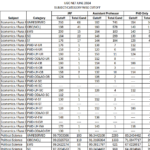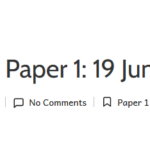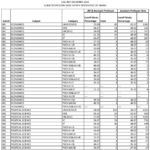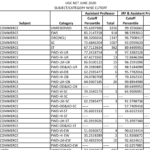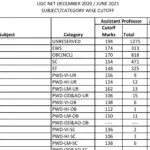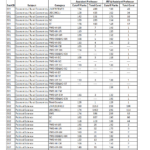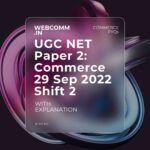 Key Points
Key Points
Elasticity coefficient - The amount that the value of one variable fluctuates as a result of changes in another variable is quantified by the elasticity coefficient.
For instance, if y is the dependent variable and x is the independent variable then the value of y will change in response to changes in the value of x.
 Important PointsPrice elasticity - The ratio of the percentage change in quantity requested to the percentage change in price of products and services is known as price elasticity.
Important PointsPrice elasticity - The ratio of the percentage change in quantity requested to the percentage change in price of products and services is known as price elasticity.
Elasticities can be effectively split into five major kinds -
1.Demand is elastic (e> 1)
- the percentage increase in quantity sought will be greater than the percentage decline in price that resulted in the former.
- As a result, total revenue will rise as the price of the commodity declines. Contrarily, this also suggests that a rise in price will result in a decline in overall revenue when demand is elastic (e > 1).
2.Demand is Inelastic (e < 1)
- When a good's demand is inelastic, its quantity requested rises proportionately less than its price rises in response to a drop in price.
- As a result, when prices drop due to inelastic demand, total revenue (or expenditure) declines.
- Additionally, it suggests that an increase in price will result in a percentage reduction in quantity sought that is proportionately less than the increase in price when demand is inelastic.
- Therefore, a raise in price will result in an increase in total revenue if demand is inelastic.
3.Demand is unitary elastic (e = 1)
- When demand for an item is unitary elastic, the quantity required increases or decreases in direct proportion to changes in price.
- When there is unitary elastic demand, total revenue (P x Q) does not vary as a result of price adjustments.
Thus, when price elasticity coefficient is less than 1 then the price increase of a commodity is followed by increased total revenue.
 Key Points
Key Points
Elasticity coefficient - The amount that the value of one variable fluctuates as a result of changes in another variable is quantified by the elasticity coefficient.
For instance, if y is the dependent variable and x is the independent variable then the value of y will change in response to changes in the value of x.
 Important PointsPrice elasticity - The ratio of the percentage change in quantity requested to the percentage change in price of products and services is known as price elasticity.
Important PointsPrice elasticity - The ratio of the percentage change in quantity requested to the percentage change in price of products and services is known as price elasticity.
Elasticities can be effectively split into five major kinds -
1.Demand is elastic (e> 1)
- the percentage increase in quantity sought will be greater than the percentage decline in price that resulted in the former.
- As a result, total revenue will rise as the price of the commodity declines. Contrarily, this also suggests that a rise in price will result in a decline in overall revenue when demand is elastic (e > 1).
2.Demand is Inelastic (e < 1)
- When a good's demand is inelastic, its quantity requested rises proportionately less than its price rises in response to a drop in price.
- As a result, when prices drop due to inelastic demand, total revenue (or expenditure) declines.
- Additionally, it suggests that an increase in price will result in a percentage reduction in quantity sought that is proportionately less than the increase in price when demand is inelastic.
- Therefore, a raise in price will result in an increase in total revenue if demand is inelastic.
3.Demand is unitary elastic (e = 1)
- When demand for an item is unitary elastic, the quantity required increases or decreases in direct proportion to changes in price.
- When there is unitary elastic demand, total revenue (P x Q) does not vary as a result of price adjustments.
Thus, when price elasticity coefficient is less than 1 then the price increase of a commodity is followed by increased total revenue.


